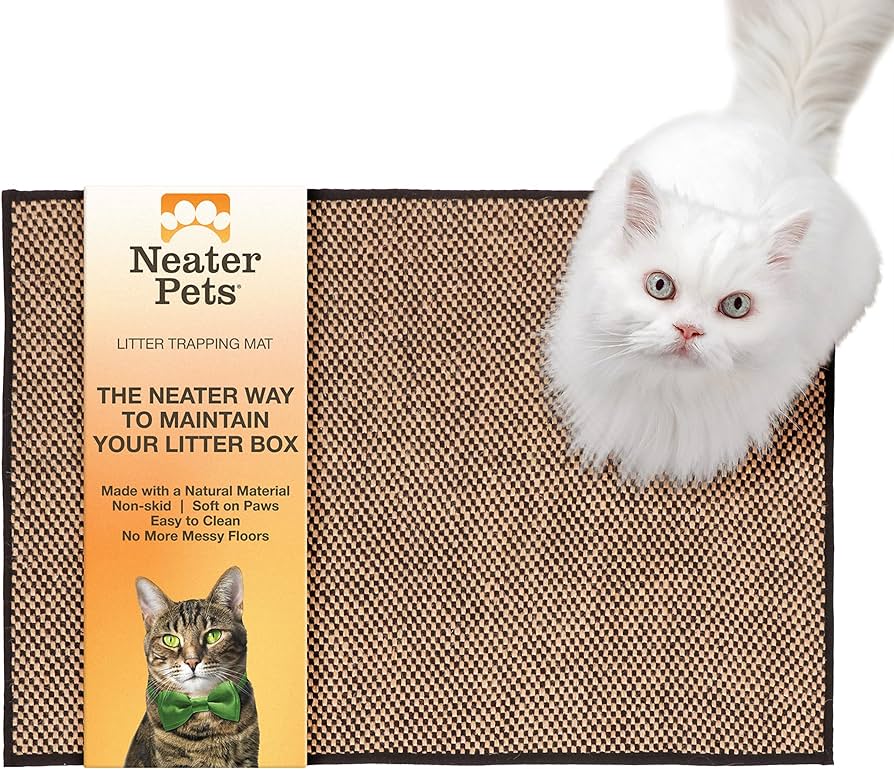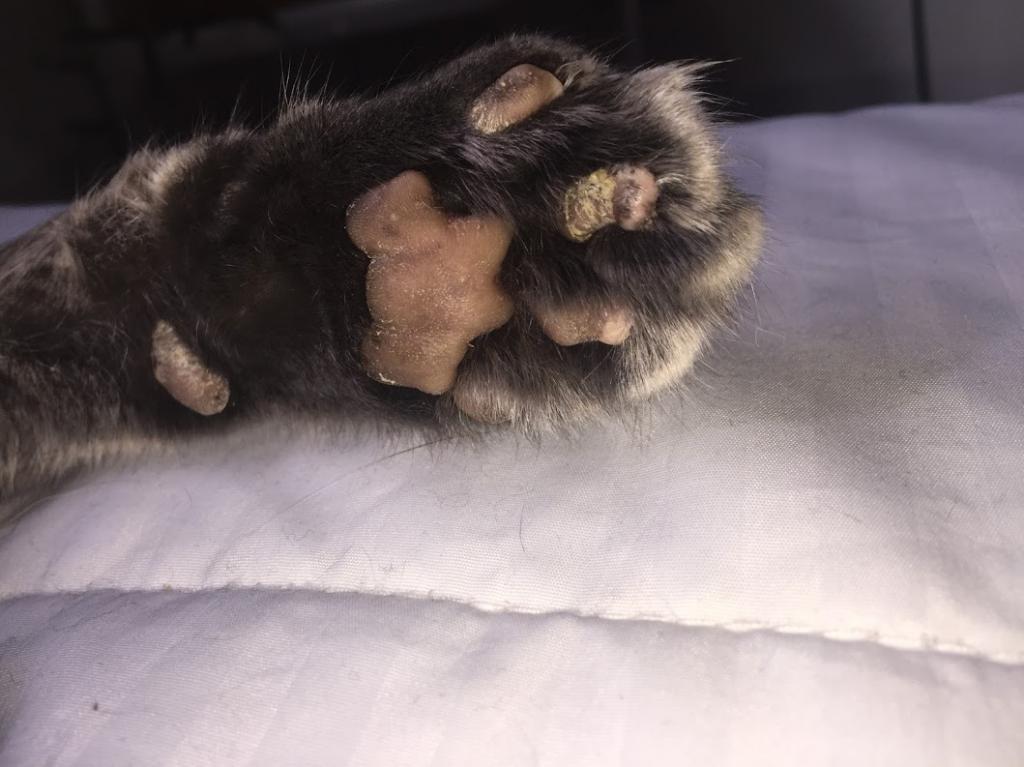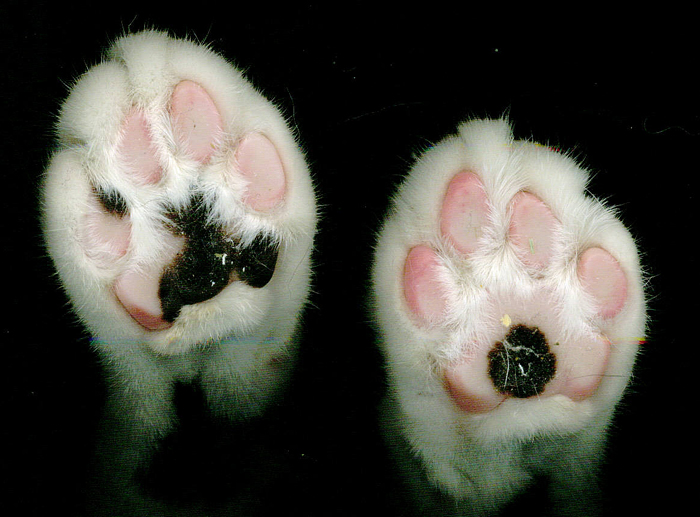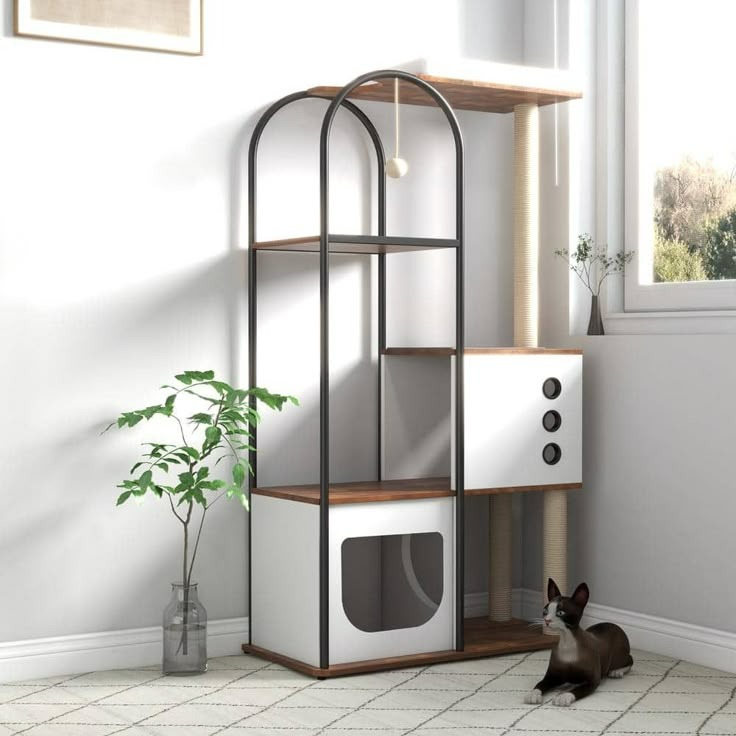
In the world of pet care, cats have rightfully earned their reputation as independent and self-sufficient creatures. However, despite their apparent self-reliance, cats rely heavily on their human companions to provide them with a clean and healthy environment. A crucial aspect of this responsibility lies in maintaining a clean litter box, a task that often goes overlooked yet holds immense importance for feline well-being.
The Challenge of Litter Stuck in Paws
While cat litter serves as a designated elimination area and plays a vital role in odor control, it can also present a challenge when it becomes entangled in a cat’s paws. This sticky situation not only causes discomfort for the cat but also leads to litter tracking throughout the house.
The Discomfort and Messes Caused by Litter Stuck in Paws
Litter stuck in paws can be a source of significant discomfort for cats. The rough particles can irritate their delicate paws, prompting them to lick and chew excessively in an attempt to remove the offending material. This behavior can lead to further irritation, potential injuries, and even ingestion of litter, which could pose health risks.
Moreover, litter stuck in paws contributes to litter tracking, spreading litter throughout the house and creating messes. This can be particularly problematic in households with carpets or furniture, as litter can easily get embedded in these surfaces, making cleaning a challenge.
Identifying the Root Causes
To effectively address the issue of litter stuck in paws, it’s essential to identify the underlying causes. Several factors can contribute to this problem, including litter type, paw structure, and grooming habits.
-
Litter Type: The type of litter used can significantly impact the likelihood of litter getting stuck in paws. Litters with smaller grains or excessive dust tend to cling more easily to fur and between toes, increasing the risk of entanglement.
-
Paw Structure: Breed-specific differences in paw structure can also play a role. Cats with long fur, especially between their toes, are more prone to litter accumulation. Additionally, cats with naturally curly or thick fur may also experience this problem more frequently.
-
Grooming Habits: Regular grooming is crucial for maintaining clean and healthy paws. Cats that groom themselves excessively or infrequently are more likely to have litter stuck in their paws. This is because excess fur can trap litter, while infrequent grooming allows litter to accumulate without being removed.
Preventive Measures to Minimize Litter Stuck in Paws
By implementing proactive measures, cat owners can significantly reduce the incidence of litter stuck in paws and maintain a clean and comfortable environment for their feline companions.
-
Choosing the Right Litter: Selecting a litter with larger grains and minimal dust can help prevent litter from getting caught in fur and between toes. Experiment with different litter types to find one that works best for your cat’s paws and preferences.
-
Regular Grooming: Regular grooming is essential to remove excess fur and prevent litter buildup between the toes. Use a brush or comb specifically designed for cats, and consider professional grooming if necessary.
-
Litter Box Placement: Placing the litter box in a low-traffic area can minimize the amount of litter tracked through the house. Additionally, ensure the litter box is kept clean and free of excessive waste, as dirty litter can increase the risk of litter sticking to paws.
Addressing Litter Stuck in Paws: Effective Solutions
When litter does become stuck in a cat’s paws, there are gentle and effective methods to remove it without causing further discomfort.
-
Manual Removal: Gently remove litter stuck in paws using soft cloths and warm water. Be careful not to irritate the paws, and avoid using harsh soaps or chemicals.
-
Wet Wipes: Pet-friendly wet wipes specifically designed for cats can be a convenient and gentle option for removing litter from paws. Choose wipes that are fragrance-free and alcohol-free to avoid irritating sensitive skin.
-
Trimming Long Fur: For cats with long fur, especially between the toes, consider trimming the fur to reduce litter accumulation. Consult a professional groomer or veterinarian for safe and effective trimming.

Additional Tips for Cat Litter and Paw Care
Beyond the preventive measures and litter removal techniques, several additional tips can enhance cat litter and paw care practices.
-
Provide a Scratching Post: Offering a scratching post encourages natural scratching behavior, which can help remove litter from paws. Choose a scratching post that is tall enough for your cat to stretch out fully and made from a material they enjoy scratching.
-
Monitor Litter Box Usage: Keep an eye on how often your cat uses the litter box and observe their behavior around it. Changes in litter box usage or avoidance could indicate underlying health problems or litter box preferences.
-
Consult Your Veterinarian: Seek expert advice from your veterinarian if you have concerns about your cat’s litter box habits or potential health issues related to litter. They can provide personalized guidance on litter selection, management strategies, and paw care practices.
-
The Importance of Proactive Care and Regular Checkups
Emphasize the importance of proactive care to prevent litter stuck in paws and maintain a clean and comfortable environment for your cat. Regular checkups with your veterinarian are essential for overall feline health. During these visits, you can discuss any concerns you have about litter box habits, paw health, or potential causes of litter getting stuck in your cat’s paws. Your veterinarian can offer additional advice and ensure your cat’s overall well-being is addressed.

Living in Harmony with Your Feline Friend
By understanding the challenges associated with litter stuck in paws, taking proactive measures, and implementing the solutions outlined above, you can create a clean and comfortable environment for your cat. This not only minimizes discomfort and messes but also strengthens the bond between you and your feline companion. Remember, a happy cat is a cat that feels comfortable using their litter box and free from the irritation of litter clinging to their paws.
Additional Considerations for Special Needs Cats
Kittens and Senior Cats: Kittens and senior cats may have specific needs when it comes to litter box management and paw care. Kittens may require a shallower litter box and a litter type specifically designed for developing paws. Senior cats might benefit from a covered litter box or a lower entry point due to mobility issues. Discuss any concerns you have about your kitten or senior cat with your veterinarian for personalized recommendations.
Medical Conditions: Certain medical conditions can affect a cat’s litter box habits and paw health. Conditions like arthritis or diabetes can make it difficult for cats to groom themselves effectively, leading to litter accumulation in the paws. If you notice any changes in your cat’s litter box usage, paw condition, or overall behavior, consult your veterinarian promptly. Early diagnosis and treatment of underlying medical conditions are crucial for your cat’s health and well-being.

Living a Litter-Free Life: Final Thoughts
Maintaining a clean litter box and preventing litter from sticking in your cat’s paws are achievable goals with proper planning and consistent effort. By implementing the tips and strategies outlined in this guide, you can create a harmonious environment for your cat and yourself. Remember, a little effort goes a long way in promoting feline well-being and ensuring a clean and comfortable living space for everyone in your home.


